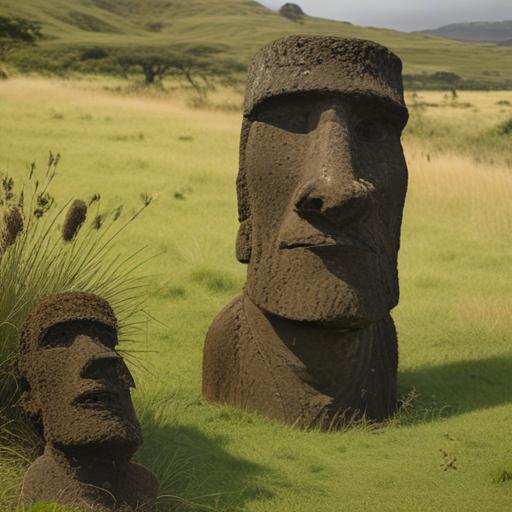Archaeologists on Easter Island have uncovered a previously unknown moai statue in the dried bed of the island’s Rano Raraku crater lake, a discovery that experts say should not have been possible and suggests more statues may still be hidden.
The newly exposed figure is among the smallest moai documented on the island, and its presence in the lakebed is unprecedented. University of Arizona archaeologist Terry Hunt said the find challenges existing inventories—his team has catalogued 981 moai with precise GPS locations—but new discoveries continue to appear. “We think we know all the moai, but then a new one turns up,” he said, noting that reeds and lake sediments have likely kept statues concealed until recent dry conditions revealed them.
Salvador Atan Hito, vice president of Ma’u Henua—the Indigenous organization that manages the Rapa Nui National Park—described the discovery as deeply significant for the Rapa Nui people, emphasizing that even elders were unaware of this statue’s existence. The lake’s lowered water level and diminished reeds have made prospecting possible; researchers say that where there is one moai in the lake, others probably exist.
Rano Raraku is the island’s main quarry where many moai were carved and left in various stages of completion. Many of the island’s finished statues were later transported to ahu (ceremonial stone platforms) around the island. The moai range widely in size: while many stand roughly 30 feet tall and weigh several dozen tons, the largest known unfinished figure—called Te Tokanga—lies on its back in the quarry and measures about 63 feet long, with weight estimates near 90–100 tons.
Earlier work on the island has combined traditional field survey with modern techniques. Hunt and colleagues use drones, cell-phone photogrammetry, and are experimenting with ground-penetrating radar to detect buried or reed-covered moai and other subsurface features. The team also points to experimental and oral-tradition-supported models suggesting Rapa Nui people moved many statues by “walking” them upright using ropes, rocking them forward rather than dragging them on rollers or sleds.
The Rano Raraku find follows a similar 2023 discovery of a roughly 5-foot-6-inch moai found face up in the quarry sediments. That statue shows carved eye sockets and a flat base—features consistent with late-stage construction, suggesting it was intended for transport and display before being abandoned or buried.
The island’s broader history remains a topic of active research. For decades Easter Island was seen as an isolated cultural backwater; recent archaeological and radiocarbon syntheses suggest a more complex pattern of colonization and contact across East Polynesia, with multiple settlement waves and cultural exchanges contributing to the island’s development. Some researchers have also proposed that ahu platforms were part of wider East Polynesian ritual architecture and may have spread in complex directions across islands.
Logical explanation and implications
– Reeds and lake sediments can conceal partially completed or abandoned moai in the Rano Raraku crater; drought or lower water levels naturally expose these features.
– Non-invasive geophysical methods such as ground-penetrating radar, combined with aerial photogrammetry, are well-suited to locate additional buried statues without damaging the landscape.
– Continued discoveries can refine understanding of moai production, transportation, and the social organization of the Rapa Nui people, while reinforcing the importance of Indigenous stewardship in managing archaeological resources.
Additional comments
– Any future survey or recovery must prioritize Rapa Nui leadership and consent. Collaborative, minimally invasive methods will protect both archaeological data and cultural values.
– The drying of the lakebed highlights environmental change; monitoring and preserving newly exposed artifacts quickly will be important to prevent weathering or looting.
– New finds can deepen public interest and support for conservation, but tourism growth should be managed to safeguard both the island’s communities and its heritage.
Brief summary
A small, previously unknown moai has emerged from the dried Rano Raraku lakebed on Easter Island, surprising archaeologists and local custodians. The discovery—possible because of unusually dry conditions—suggests other statues may remain hidden under reed-choked sediments. Researchers plan to use non-invasive survey tools and emphasize collaboration with the Rapa Nui community to responsibly investigate and preserve any further finds. The ongoing work contributes to broader debates about the island’s settlement history and the techniques used by its ancient carvers and movers.
Hopeful perspective
Each new moai adds to the story of Rapa Nui engineering, art, and social life. Discoveries like this one offer opportunities for collaborative research that strengthens Indigenous stewardship, expands scientific understanding, and—if managed sustainably—can support cultural pride and responsible cultural tourism.
